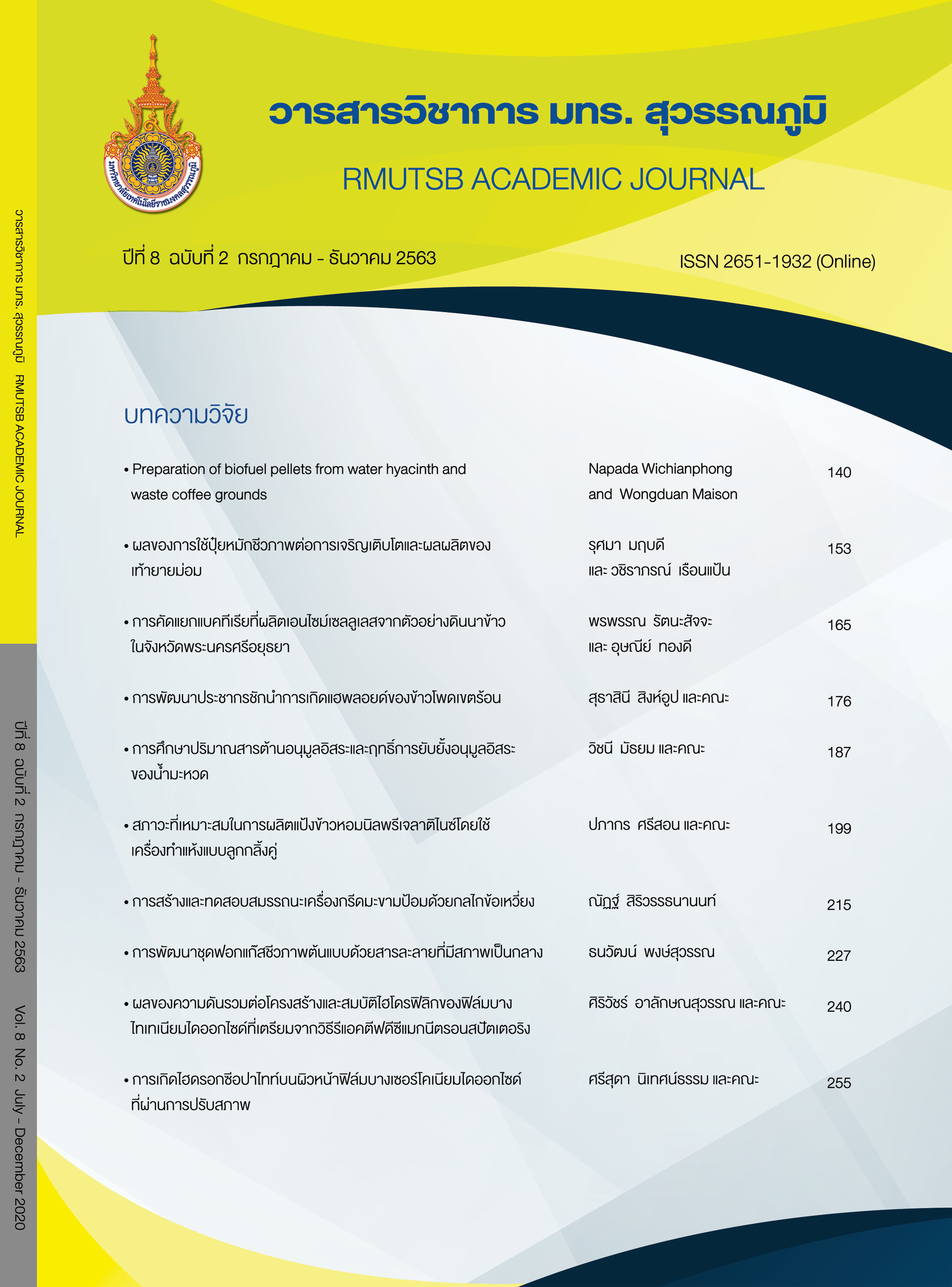Population improvement of tropicalized maize haploid inducer
Main Article Content
Abstract
The use of doubled haploids in a field maize is an increasingly recognized tool for inbred line development. The haploid seed can be induced by using haploid inducer and generated the double haploid line by chromosome doubling and selfing in a generation to increase the seed. The objective of this study was to develop a haploid-inducer population that well-adapted to Thailand's environment by crossing between Thai's corn inbred line (non-inducer) and haploid inducer line. The crosses were made between 3 Kasetsart inbred lines (Ki), namely Ki 3, Ki 35, and Ki 52 as female parents and haploid inducer, which was Stock 6 as male parent obtaining 3 F1-hybrids. F1 seeds were planted in the ear-to-row method and crossed among plants in a row to produce the F2 seeds. Then, the seeds with purple aleurone layer and scutellum in each cross were selected, planted, and self-pollinated for three consecutive generations, receiving S3 lines. The haploid-inducer population was created from the best 5 S3 lines in each cross, having a high haploid induction rate of their S2 lines when crossing with Kei 1303 × Ki 60. The haploid induction rate of this population was measured by crossing with thirteen single cross hybrids. The results showed that the haploid induction rate was in a range of 0.33-4.60%. The growth and agricultural characteristics of this population were similar to the regular field maize, but its kernel, leaf sheath, and tassel were purple coloration.
Article Details
Published manuscript are the rights of their original owners and RMUTSB Academic Journal. The manuscript content belongs to the authors' idea, it is not the opinion of the journal's committee and not the responsibility of Rajamangala University of Technology Suvarnabhumi
References
Chaikam, V., Martinez, L., Melchinger, A. E., Schipprack, W., & Boddupalli, P. M. (2016). Development and validation of red root marker-based haploid inducers in maize. Crop Science, 56(4), 1678-1688.
Chaikam, V., Nair, S. K., Martinez, L., Lopez, L. A., Utz, H. F., Melchinger, A. E., & Boddupalli, P. M. (2018). Marker-assisted breeding of improved maternal haploid inducers in maize for the tropical/subtropical regions. Frontiers in Plant Science, 9, 1527-1541.
Chaikam, V, Molenaar, M., Melchinger, A. E., & Prasanna, M. B. (2019). Double haploid technology for line development in maize: Technical advances and prospects. Theor Appl Genet, 132, 3227-3243.
Chen, C., Xiao, Z., Zhang, J., Li, W., Li, J., Liu, C., & Chen, S. (2020). Development of in vivo haploid inducer lines for screening haploid immature embryos in maize. Plants, 9, 739-749.
Coe, E. H. (1959). A line of maize with high haploid frequency. The American Naturalist, 93(873), 381-382.
Coe, E. H. (1962). Spontaneous mutation of the aleurone color inhibitor in maize. Genetics, 47(6), 779-783.
Coe, E. H., McCormick, S., & Modena, S. (1981). White pollen in maize. Heredity, 72, 318-320.
Coe, E. H. (1994). Anthocyanin genetic. In M. Freeling, & V. Walbot (Eds.), The Maize Handbook Springer Lab Manual (pp. 279-281). New York: Springer.
Della Vedova, C. B., Lorbiecke, R., Kirsch, H., Schulte, M. B., Scheets, K., Borchert, L. M., Scheffler, B. E., Wienand, U., Cone, K. C., & Birchler, J. A. (2005). The dominant inhibitory chalcone synthase allele C2-Idf (inhibitor diffuse) from Zea mays (L.) acts via an endogenous RNA silencing mechanism. Genetics, 170(4), 1989-2002.
Eder, J., & Chalyk, S. (2002). In vivo haploid induction in maize. Theor Appl Genet, 103, 703-708.
Geiger, H. H. (2009). Doubled haploid. In J. L. Bennetzen, & S. Hake (Eds.), Handbook of Maize (pp. 641- 657). New York: Springer.
Geiger, H. H., & Gordillo, G. A. (2009). Doubled haploids in hybrid maize breeding. Maydica, 54, 485-499.
Hu, H., Schrag, T. A., Peis, R., Unterseer, S., Schipprack, W., Chen, S., Lai, J., Yan, J., Prasanna, B. M., Nair, S. K., Chaikam, V., Zavalishina, A., Scholten, S., Schön, C.C., & Melchinger, A. E. (2016). The genetic basis of haploid induction in maize identified with a novel genome-wide association method. Genetics, 202(4), 1267-1276.
Prasanna, B. M., Chaikam, V., & Mahuku, G. (2012). Double haploid technology in maize breeding: Theory and practice. Mexico City: CIMMYT.
Prigge, V., & Melchinger, A. E. (2012). Production of haploids and doubled haploids in maize. Methods in molecular biology (Clifton, N.J.), 877, 161-172.
Samphantharak, K. (2008). Plant breeding: fundamentals, methods and concepts. Bangkok: Kasetsart University. (in Thai)
Shatskaya, O. A. (2010). Haploinductors isolation in maize: Three cycles of selection on high frequency of induction of matroclinal haploids. Agric. Biol, 7, 79-86.
Trentin, U. H., Frei, U. K., & Lübberstedt, T. (2020). Breeding maize maternal haploid inducers. Plants, 9(5), 614.


